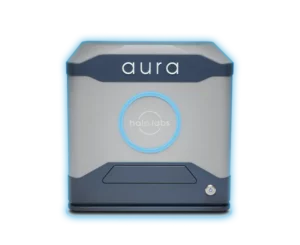Finding the Needle in a Haystack: Rapid Assays to Detect Degraded Polysorbate and Other Problems Lurking in your Formulation
Polysorbates 20 and 80 are excipients used in >70% of marketed parenteral biological drugs to improve product stability and shelf life. However, when formulations containing these excipients are stored for long periods of time at low temperatures, visible and subvisible particles are formed. There exists a need to distinguish degraded polysorbate from other particle types but high-throughput, sensitive, and specific analysis of polysorbate particles has been difficult due to their complex chemistry, their low concentrations, and the fact that they appear like other particle types when using optical imaging techniques.
Halo Labs has solved this perennial needle in a haystack problem. Aura™ can quickly identify and distinguish polysorbate from other particle types. Using Aura’s high throughput, low volume format, months of development time can be saved by knowing the source of particles in your formulation and distinguishing aggregated drug product from degraded excipients.
In this GEN webinar, our CSO, Dr. Bernardo Cordovez, will give us more insight into a novel platform technology that delivers low volume, high-throughput subvisible particle imaging counting, sizing, and identification. The Aura PTx™ is a complete protein therapeutic stability solution that enables characterization of subvisible particle aggregates from CHO cell line development, thru developability assessment down to product release—providing investigators a deeper understanding of the physical instabilities of the biologic in question.


